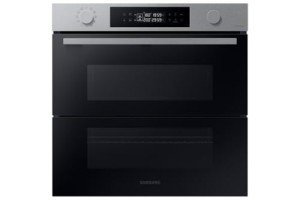The Modern Kitchen: A Guide to Built-In Ovens and Hobs
In today's busy world, where cooking has actually ended up being an innovative outlet and a vital part of every day life, having the right kitchen appliances is vital. Amongst these, built-in ovens and hobs stand out as favorites in modern-day kitchens. This short article intends to explore these appliances in depth, discussing their advantages, types, setup alternatives, and necessary pointers for selecting the best models for your kitchen.
Understanding Built-In Ovens and Hobs
What are Built-In Ovens?
A built-in oven is an appliance that is designed to fit flawlessly into cabinetry, providing a clean aesthetic in the kitchen. best integrated oven vary from freestanding ovens and are known for their flexibility, readily available in different sizes and functionalities. Built-in ovens can be electric, gas, or perhaps steam ovens, making them ideal for different cooking designs.
What are Hobs?
Hobs, also called cooktops, are the flat cooking surface areas typically located on the countertop. Like ovens, hobs are available in numerous forms, consisting of gas, electric, induction, and even integrated styles. Their compact nature enables flexibility in kitchen designs and styles.
Table 1: Comparison of Built-In Ovens and Hobs
| Feature | Built-In Oven | Hob |
|---|---|---|
| Installation Type | Integrated into kitchen cabinets | Installed on counter top |
| Cooking Methods | Baking, roasting, steaming | Boiling, frying, sautéing |
| Types | Single, double, combination | Gas, electric, induction |
| Visual appeals | Modern, sleek styles | Numerous finishes offered |
| Control | Digital shows, handbook | Knob or touch control |
| Cost Range | Mid to high-range | Wide, depending upon type |
Advantages of Built-In Ovens and Hobs
Visual Appeal
Built-in ovens and hobs contribute significantly to a structured look in contemporary cooking areas. Their combination into cabinetry permits a tidy and expert surface that matches any kitchen style.
Space-Saving Design
One of the essential advantages of built-in ovens and hobs is their space-saving style. As they are fitted directly into cabinets, they free up important counter space, making the kitchen feel bigger and more arranged.
Versatility in Cooking Methods
Built-in ovens come with different cooking functions, such as convection, grilling, and self-cleaning options. Similarly, hobs offer diverse cooking methods, including fast boiling with induction innovation or the standard flame of gas hobs. This flexibility enables home cooks to explore a wide variety of cooking strategies.
Enhanced Safety Features
Numerous contemporary built-in hobs and ovens included advanced security functions, such as automatic shut-off, cool-touch doors, and kid locks. These features enhance security, especially in families with children.
Choosing the Right Built-In Oven and Hob
Picking the best built-in oven and hob for your kitchen involves several factors to consider:
Factors to Consider
- Kitchen Layout: Understand the flow and design of your space to select appliances that fit your style.
- Cooking Habits: Are you a casual cook, or do you prepare intricate meals? Understanding your cooking requirements will assist your choice.
- Budget: Building a budget plan will assist narrow down your alternatives without spending beyond your means.
- Utilities Available: Check if you have access to gas lines for a gas hob or if you prefer electric alternatives.
- Energy Efficiency: Look for energy-efficient designs that can minimize electricity or gas costs gradually.
Kinds Of Built-In Ovens and Hobs
Built-In Ovens
- Single Ovens: Ideal for smaller sized kitchen areas or casual cooks.
- Double Ovens: Great for those who often entertain or cook multiple dishes concurrently.
- Mix Ovens: Feature both conventional and microwave functionalities.
Hobs
- Gas Hobs: Perfect for those who choose the control of open flames.
- Electric Hobs: Common and easy to utilize, but may take longer to warm up.
- Induction Hobs: Quick heating and energy-efficient, but require suitable pots and pans.
FAQ Section
Q1: Are built-in ovens more pricey than freestanding ovens?A1: Generally, built-in ovens are more expensive due to their design and setup requirements. However, the price can differ based on features and brand names. Q2: Can I install a built-in oven myself?A2: While DIY
setup is possible, it is recommended to hire an expert for gas and electrical connections to ensure security and compliance with regional codes. Q3: What upkeep do built-in ovens and hobs require?A3: Regular cleaning is necessary. Hobs might need occasionaldescaling, and ovens can gain from self-cleaning functions if
readily available. Q4: How do I choose in between gas and electric hobs?A4: Consider your cooking preferences, available energy connections, and safety features.
If you value exact temperature control, gas might be the
ideal choice. For fast heating, electric or induction might be much better. Q5: What are the energy effectiveness ratings of built-in ovens and hobs?A5: Most contemporary built-in ovens and hobs featured energy ratings, comparable to other appliances.
Search for those with high ratings to save money on energy costs. In summary, built-in ovens and hobs are vital components of a trendy and practical modern kitchen. Their range, security features, and aesthetic appeal make them an attractive option for homeowners and aiming chefs alike. By carefully considering your cooking routines, kitchen layout, and style choices, you can select the ideal built-in appliances that improve your cooking experience and transform your kitchen into a culinary haven. The financial investment in these appliances not only adds worth to your home however likewise raises your cooking to new heights.

